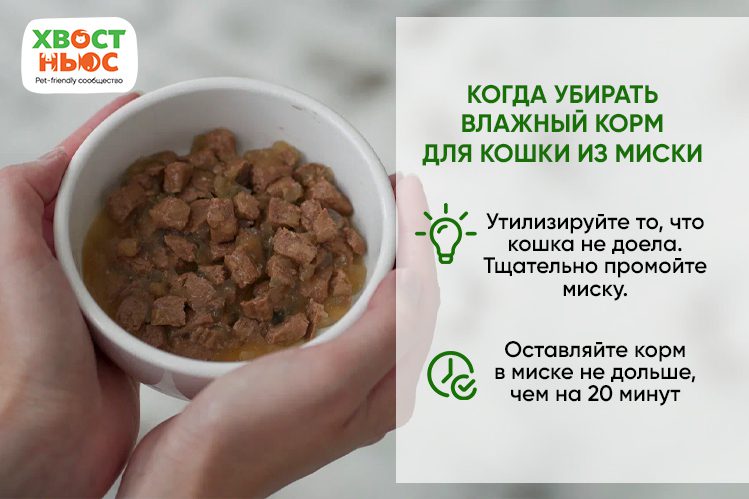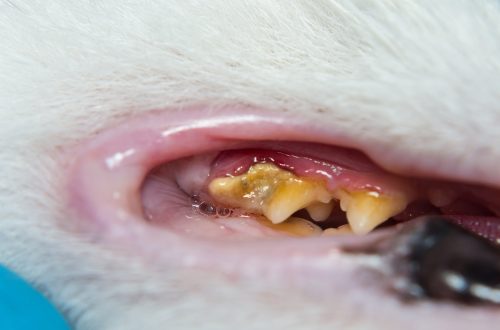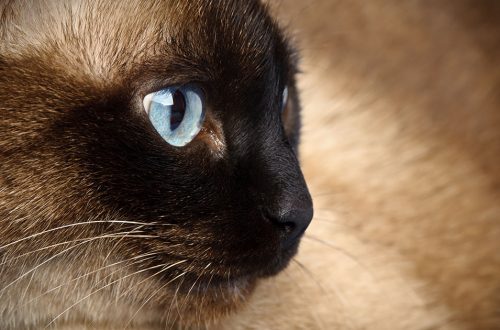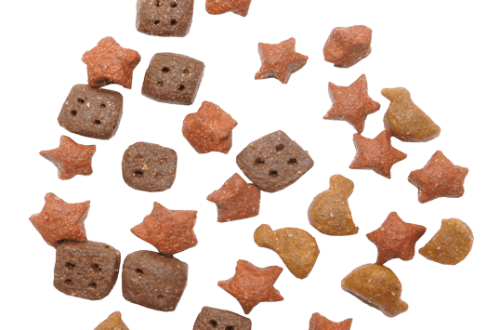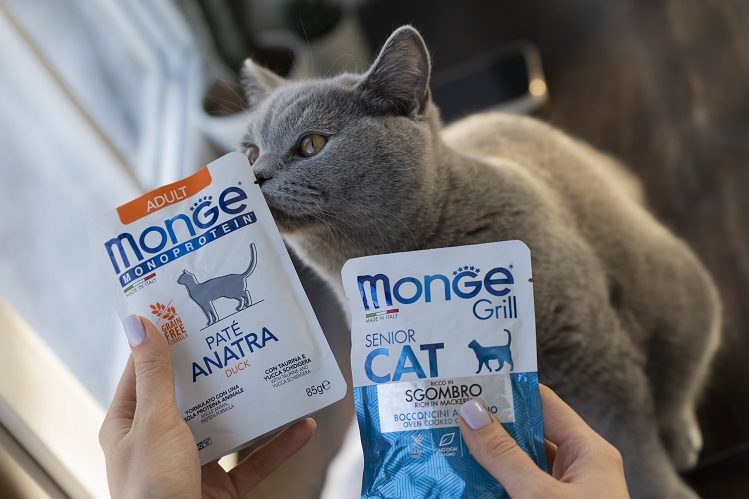
How to store wet cat food. Blitz interview with a veterinarian-nutritionist
SharPei Online asked veterinary nutritionist Anastasia Fomina about half-eaten portions and open packs.
In this short interview, you will find out how long open jars and pouches of canned food actually last, what can be wrong with wet food from the refrigerator, and after how many minutes it’s time to throw food in a bowl. These and other situations were discussed with the veterinarian by SharPei Online editor-in-chief Daria Frolova, the owner of the Kokos cat, who loves wet food.
Anastasia, let’s start with the main thing: how long can wet food be stored?
The main thing is to carefully study the information on the package. The manufacturer always indicates the period and conditions of storage: the percentage of relative humidity and temperature, storage time in a closed package or in an open form in a refrigerator.
So there is no universal rule for storing wet food?
Usually the requirements are as follows: relative humidity is not higher than 75 or 90%, storage temperature of closed food is from 0 to + 30 degrees. Also, the shelf life depends on the method of sterilization and the form of packaging: canned food or pouches. I recommend storing wet food in sealed containers in a dry, cool place.

With closed packages, of course. But what if a jar of canned food or a pouch has already been opened? Does this food spoil quickly?
In the composition of canned food and spiders, moisture averages 60-78%. And since water is a favorable environment for the development of bacteria, the shelf life of the opened package is strictly regulated.
When opened in the refrigerator, the shelf life is usually 24-72 hours. I recommend doing this: take an open bag of wet food, close it tightly with black paper clips and put it in the refrigerator. If this is a tin can, it is better to close it with cling film or a plastic lid of a suitable diameter.
And then what? Can the food be given directly to the cat from the refrigerator or is it better to warm it up?
There is a nuance here: usually cats are extremely sensitive to the temperature of the food. Most likely, this has developed evolutionarily: cats are predators who are constantly interested in catching prey. During the day they can hunt from 20 to 60 times. And their prey is always warm. Domestic cats, of course, no longer hunt, but their food should be at least at room temperature. Cold food from the refrigerator often provokes vomiting.
In my practice, there was a case when a young cat stably vomited water 1-2 times a week. It turned out that she only recognized ice-cold water from a bowl or from the tap. I recommended drinking fountains and bowls of warmer water, and the problem went away.
That is, if a cat vomits after eating, is it the temperature of the food?
Maybe. But not a fact. In this case, you first need to contact a veterinarian and check the pet – including the pathology of the digestive tract and kidneys.
What about wet food in a bowl? What to do if the cat has not finished its portion?
If the cat has not eaten the food within 15-20 minutes, it will have to be disposed of. Leaving the food in the bowl will lead to mold and bacteria growth. Such food is considered spoiled. If for some reason the cat decides to finish eating it later, she may get poisoned.
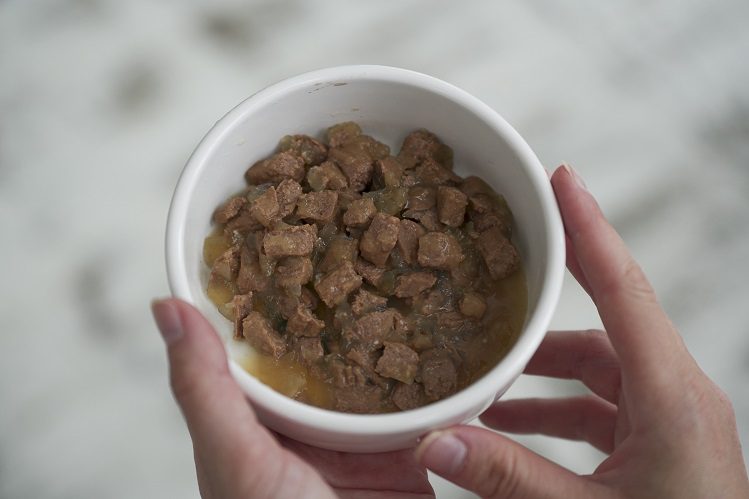
And how often should you wash your bowl?
After every feeding. And it is better to wash with detergent, and then thoroughly rinse the bowl under plain tap water. Detergents will help prevent the development of bacteria, but it is important to thoroughly rinse the bowl after washing. If the smell comes from it, most likely, the cat will refuse food.
Thanks for the conversation, Anastasia! It has become much clearer. And the final trick for SharPei Online subscribers – how not to make a mistake with wet food?
Let me remind you of the main principle. If your cat only eats wet food, make sure that it is a complete food: that is, it can be used as the main food. Only such food contains all the necessary components, including vitamins and minerals. Look for this information on the back of the package. She talked about it in detail in the article.
To always store wet food correctly, catch a visual cheat sheet:
- How to store wet food in a sealed package
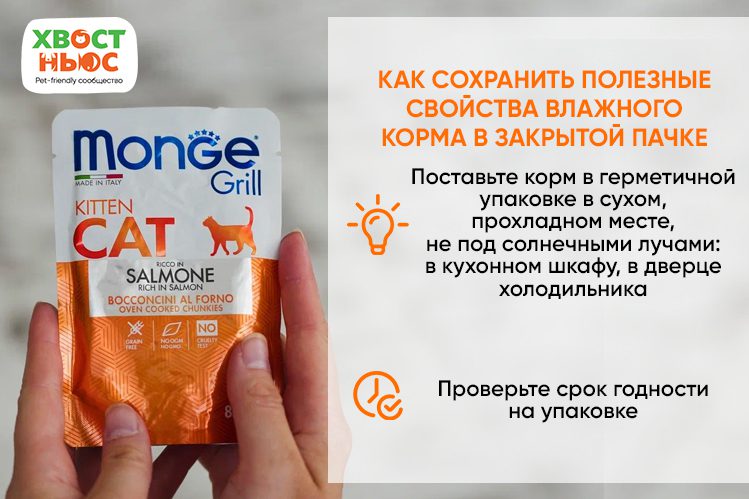
- How to store wet food in an open pack
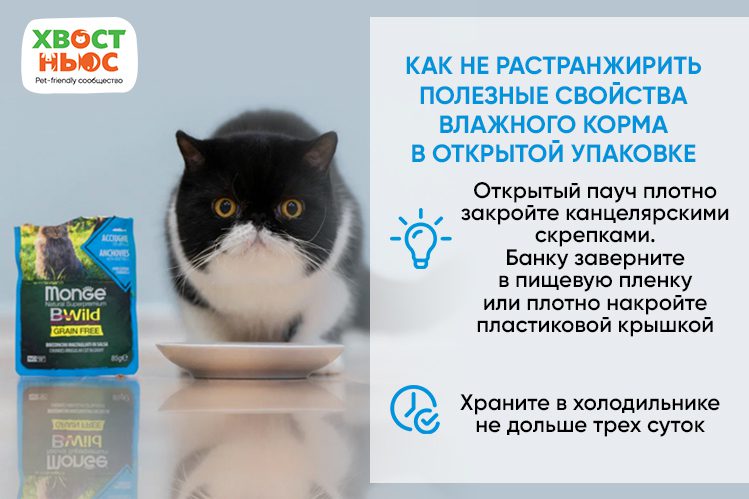
- How to store wet food in a bowl
